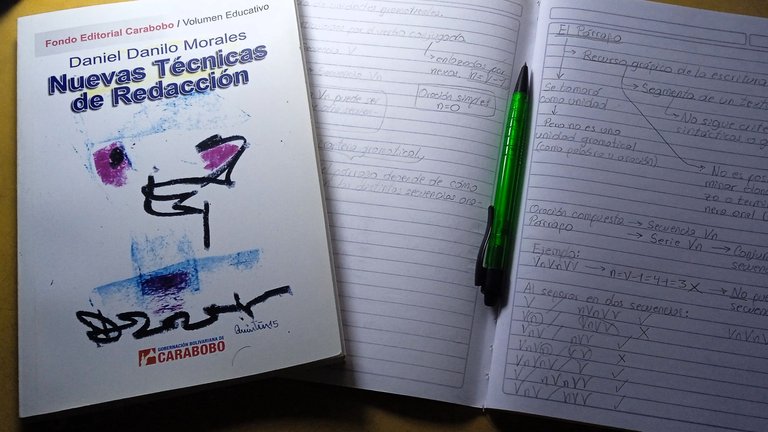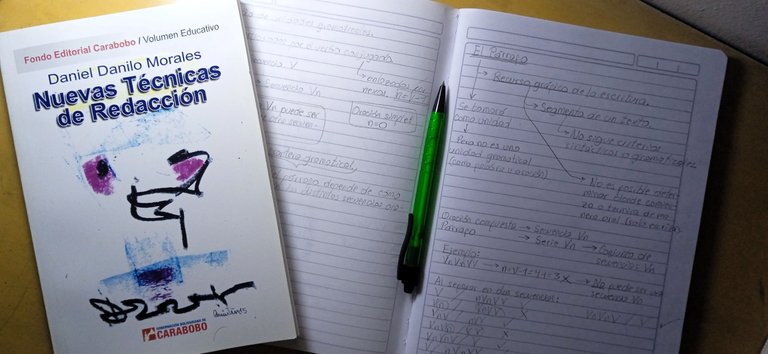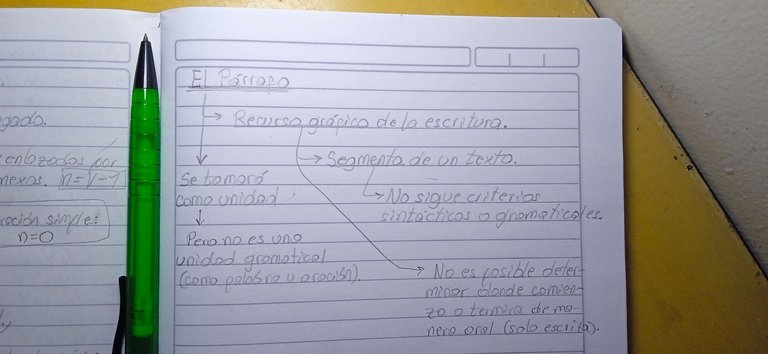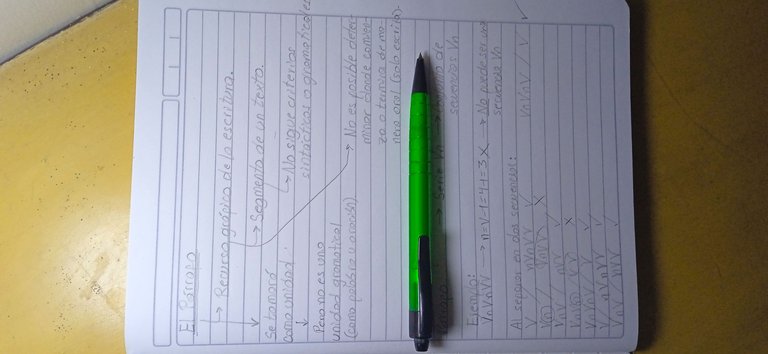La comunicación escrita es fundamental para el ser humano moderno, quizás una de las bases de su desarrollo como civilización. Como usuarios y creadores de contenido en #Hive, hacemos uso muy frecuente de la escritura en nuestras publicaciones. Y sabiendo eso ¿Alguna vez te has preocupado por cómo redactas un texto y la impresión que causa a los lectores? No es la idea preocuparse por redactar como un profesional de la literatura (si fuera así la mayoría aquí nunca hubiéramos empezado a hacerlo), sino más bien hacer que tu redacción sea lo mejor posible, aprendiendo a tu ritmo.
Este es el enlace de la iniciativa actual en la comunidad Humanitas: Iniciativa de Humanitas: Fotografías y Reflexiones (Liketu).
Click here for the English Version
Written communication is fundamental to modern human beings, perhaps one of the foundations of their development as a civilization. As users and content creators at #Hive, we make very frequent use of writing in our publications. And knowing that, have you ever worried about how you write a text and the impression it makes on readers? It's not the idea to worry about writing like a literary professional (if that were the case most of us here would never have started doing it), but rather to make your writing the best it can be, learning at your own pace.
This is the link to the current initiative in the Humanitas community: Humanitas Initiative: Photographs and Reflections (Liketu).

Habiendo dicho esto, les presento un libro con el que estuve practicando y mejorando mi redacción hace aproximadamente año y medio, obra de Daniel Danilo Morales, titulado: "Nuevas Técnicas de Redacción". Este libro fue un regalo de @kikixtina. Este libro ilustra y presenta técnicas de redacción, con una teoría muy sintetizada y fácil de seguir, junto con ejemplos y ejercicios prácticos con los que ejercitar en tus tiempos libres. Creo que lo que más me gustó fue la manera en que explica claramente ciertos conceptos y fundamentos de la redacción, inclusive utilizando ciertas fórmulas.
Click here for the English Version
I present to you a book with which I was practicing and improving my writing about a year and a half ago, by Daniel Danilo Morales, entitled: "Nuevas Técnicas de Redacción" (New Writing Techniques). This book was a gift from @kikixtina. This book illustrates and presents writing techniques, with a very synthesized and easy-to-follow theory, along with examples and practical exercises to practice within your free time. What I liked most was how it clearly explained certain concepts and fundamentals of writing, even using certain formulas.

El libro va desde las palabras y oraciones más simples hasta la composición de oraciones complejas y textos. Algo que me llamó la atención es que va más allá de la división "sujeto-verbo-predicado" que nos suelen enseñar en el colegio, e introduce elementos como los nexos, objetos directos, entre otros. Con este libro siento que he adquirido una forma más lógica y eficiente de escribir oraciones. Además, creo que me ha ayudado también a intentar crear textos más concisos y sintetizados. La verdad es que quizás aún tengo mucho por mejorar. Como ingeniero, el mundo de las letras no es realmente mi punto fuerte, pero estuve leyendo la manera en que redactaba en mis primeros años en Hive y me parece que la diferencia es muy notoria.
Click here for the English Version
The book goes from the simplest words and sentences to the composition of complex sentences and texts. Something that caught my attention is that it goes beyond the "subject-verb-predicate" division that we are usually taught in school, and introduces elements such as nexuses, and direct objects, among others. With this book, I feel that I have acquired a more logical and efficient way of writing sentences. In addition, I think it has also helped me to try to create more concise and synthesized texts. The truth is that perhaps I still have a lot of room for improvement. As an engineer, the world of letters is not really my strong point, but I was reading the way I used to write in my first years in Hive and I think the difference is very noticeable.

Hablando de las fórmulas que el libro muestra, en estas fotografías pueden observar algunos de mis apuntes. Una de las fórmulas es n=V-1. Esto es, la cantidad de nexos en una oración compuesta (n) es la cantidad de verbos (V) menos 1. Es decir, tiene mucho sentido, la cantidad de verbos señala la cantidad de "cosas" o "acciones" que hay en la oración, y debe haber 1 nexo para conectar 2 verbos. Una oración simple sólo tiene 1 verbo y ningún nexo ya que no hay necesidad de conectarse con otro verbo. Todo esto suena muy teórico y nunca vas a pensar en ello mientras escribes pero poder internalizarlo es genial. Por cierto ¿Sabes la diferencia entre un verbo conjugado y otro que no? Esto es clave y es una de las ideas principales del libro.
Click here for the English Version
Speaking of the formulas that the book shows, in these pictures you can see some of my notes. One of the formulas is n=V-1. That is, the number of nexuses in a compound sentence (n) is the number of verbs (V) minus 1. That is, it makes perfect sense, the number of verbs points to the number of "things" or "actions" in the sentence, and there must be 1 nexus to connect 2 verbs. A simple sentence has only 1 verb and no nexus since there is no need to connect to another verb. This all sounds very theoretical and you are never going to think about it while writing but being able to internalize it is great. By the way, Do you know the difference between a conjugated verb and a non-conjugated verb? This is key and is one of the main ideas of the book.

Otra de las ideas interesantes de este libro se encuentra justo en la otra página, mostrada en estas fotografías. Un párrafo es un recurso gráfico, ya que no sigue ninguna regla gramatical. Es decir, quien redacta decide cómo son sus párrafos. Cuando alguien lee un texto en voz alta, para el que escucha es difícil saber donde inicia o termina un párrafo (si es que los hay). Hay un consejo muy frecuete en Hive, y es el de hacer párrafos no muy extensos para no generar fatiga al lector. Los espacios de por medio suelen ser un descanso. Dependiendo del tipo de contenido, los párrafos pueden ser más o menos largos ¿Cómo son tus párrafos? Quizás eso habla de cada persona en particular.
Click here for the English Version
Another interesting idea in this book is found just on the other page, shown in these photographs. A paragraph is a graphic resource since it does not follow any grammatical rules. That is, whoever writes decides what their paragraphs look like. When someone reads a text aloud, it is difficult for the listener to know where a paragraph begins or ends (if there are any). There is a very frequent advice in Hive, and that is to make paragraphs not too long so as not to generate fatigue for the reader. Spaces in between are usually a break. Depending on the type of content, paragraphs can be longer or shorter. How long are your paragraphs? Maybe that depends on each person in particular.
Divagando un poco en todo esto, creo que el ser humano tiene en la comunicación escrita un recurso extra en su desarrollo. Civilizaciones enteras no desarrollaron escritura alguna, o una muy rudimentaria. No dejaron registros claros de su historia. Pero heredamos de aquellas civilizaciones que sí lo hicieron una simbología para transmitir información en el tiempo. En la actualidad parece haber un retroceso en nuestras habilidades escritas debido al internet, lo cual nos lleva a reflecionar, quizás en otro post. Quienes escribieron textos enteros hace más de 2000 años debieron tener un mérito impresionante. Hablando de los verbos, también se dice en la Biblia que primero fue el verbo y qué este era Dios. Siempre me he preguntado qué quiere decir tal versículo.
Click here for the English Version
Divagating a little in all this, I believe that the human being has in the written communication an extra resource in its development. Entire civilizations did not develop any writing, or a very rudimentary one. They left no clear records of their history. But we inherited from those civilizations that did a symbology to transmit information over time. Today there seems to be a regression in our written skills due to the internet, which leads us to reflect, perhaps in another post. Those who wrote entire texts over 2000 years ago must have had impressive merit. Speaking of verbs, it is also said in the Bible that first came the verb and that this was God. I have always wondered what such a verse means.
Translated to English language with the help of DeepL.com
Fotografías de autoría propia / Own photos (Redmi 9C)
Otras redes sociales:
 |
 |
 |
F1 & motorsports: @acontmotor
Expresión Creativa. Literatura | Entretenimiento | Arte: @acontblog
| ¡Gracias por visitar! — ¡Thanks for visiting!  |
¡Muy bien!
~~~ embed:1751735289666482334 #POSH #X #Twitter twitter metadata:YWNvbnRjaXZpbHx8aHR0cHM6Ly90d2l0dGVyLmNvbS9hY29udGNpdmlsL3N0YXR1cy8xNzUxNzM1Mjg5NjY2NDgyMzM0ICNQT1NIICNYICNUd2l0dGVyfA== ~~~
Congratulations @acont! You have completed the following achievement on the Hive blockchain And have been rewarded with New badge(s)
You can view your badges on your board and compare yourself to others in the Ranking
If you no longer want to receive notifications, reply to this comment with the word
STOPCheck out our last posts: